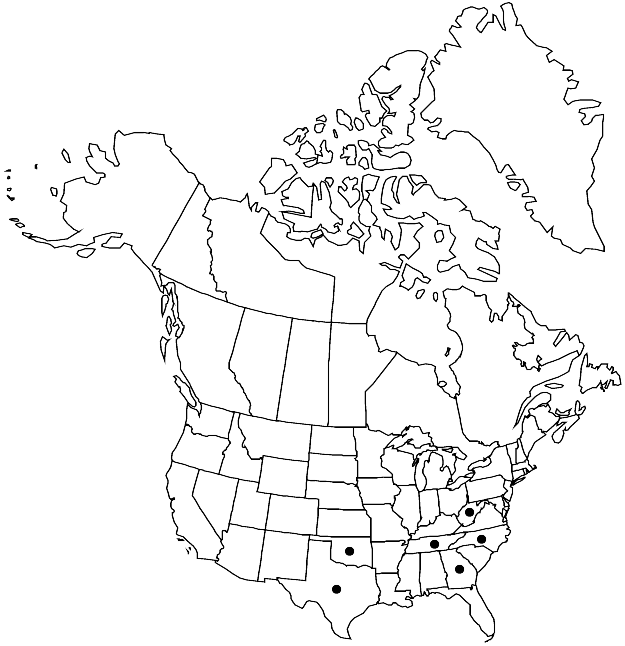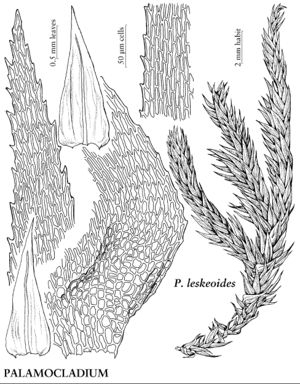Palamocladium leskeoides
Bull. Torrey Bot. Club 40: 673. 1914.
Plants rigid, somewhat glossy. Stems 3–7 cm, branches to 10 mm, spreading. Stem leaves 2.3–3 × 0.8–1 mm; base abruptly rounded to insertion; marginal teeth partly recurved; costa 90–100% leaf length; alar cells 6–10 × 7–11 µm, region opaque, ± clearly delimited, extending almost to margins; laminal cells 35–65 × 5 µm, walls moderately porose; basal juxtacostal cells 9–11 µm wide, more distal juxtacostal cells elongate, in 2–4 rows, walls strongly pitted; cells in acumen rhombic. Sporophytes unknown in North America.
Habitat: Limestone cliffs, boulders
Elevation: low to moderate elevations (0-900 m)
Distribution

Ga., N.C., Okla., Tenn., Tex., W.Va., Mexico, Central America, South America.
Discussion
H. Hofmann (1997b) considered Palamocladium leskeoides to have a pantropical distribution, but specimens of Palamocladium from Asia and Africa differ somewhat from the American ones.
Selected References
None.
